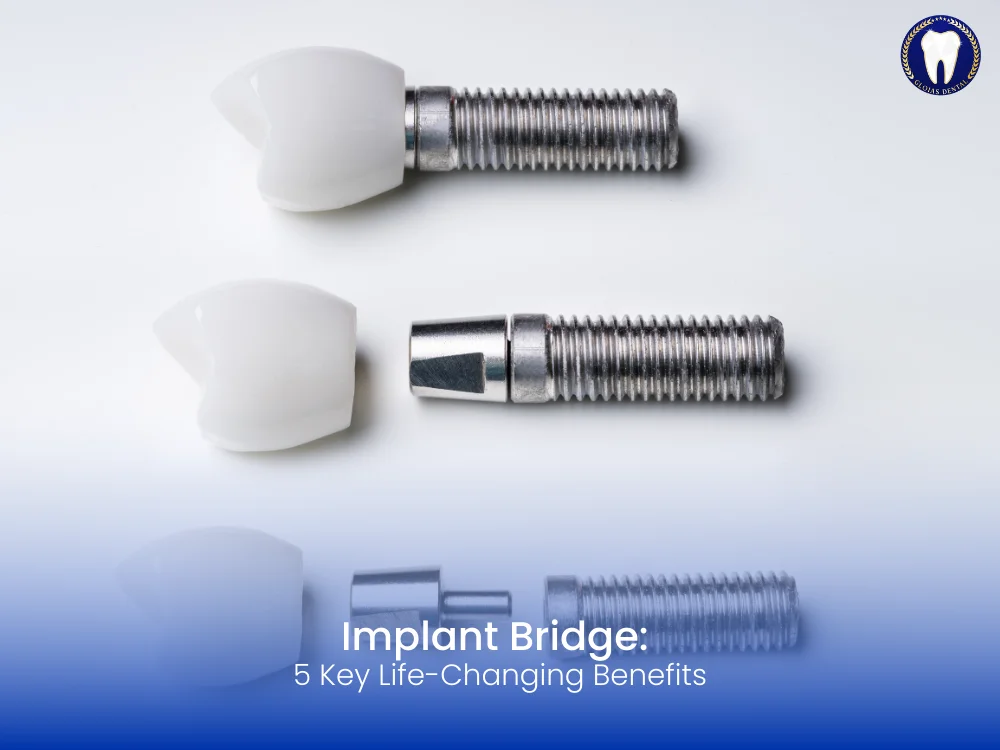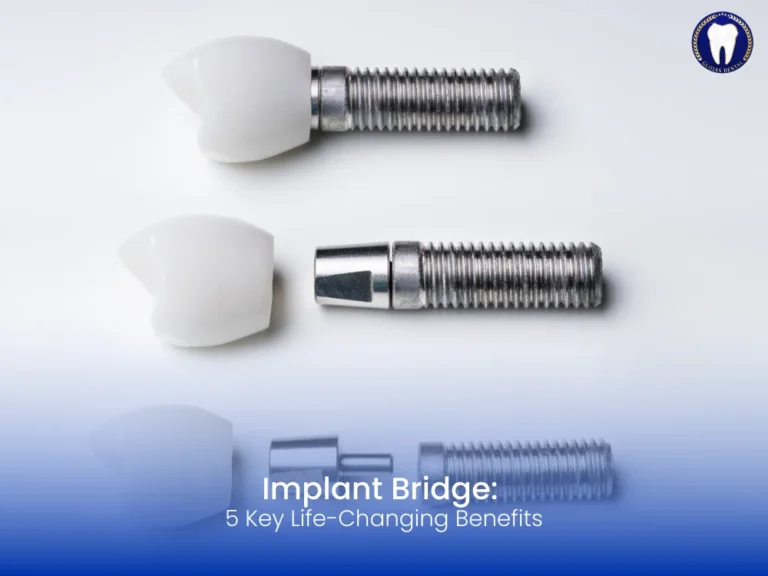Tooth loss isn’t just about appearance—it affects confidence, speech, nutrition, and overall oral health. Fortunately, modern dentistry offers several long-lasting solutions, and the implant bridge stands out as one of the most reliable and aesthetically pleasing options available. Whether you’ve lost a few teeth or a full arch, an implant bridge provides the durability, function, and appearance of natural teeth, restoring more than just your smile.
What Is an Implant Bridge?
An implant bridge is a dental restoration used to replace multiple missing teeth in a row. Unlike traditional bridges, which rely on adjacent teeth for support, an implant bridge is anchored to dental implants surgically placed in the jawbone. This eliminates the need to grind down healthy teeth and provides a more stable, permanent solution.
How Does It Work?
- Implants are placed into the jawbone to act as artificial roots.
- A bridge (a series of connected crowns) is attached to the implants.
- The final result is a strong, natural-looking set of teeth.
Who Is a Good Candidate for an Implant Bridge?
Candidates for an implant bridge typically:
- Have lost multiple adjacent teeth
- Possess sufficient jawbone density (or can undergo bone grafting)
- Are in good general and oral health
- Do not smoke or are willing to quit during the healing process
A consultation with a qualified implant dentist includes X-rays, 3D scans, and a comprehensive evaluation to determine candidacy.

Advantages of Choosing an Implant Bridge
Opting for an implant bridge offers numerous benefits over traditional dentures and fixed bridges.
Bone Preservation and Stability
Implants stimulate the jawbone, preventing bone loss that naturally occurs after tooth loss. This helps maintain facial structure and prevents the “sunken” look associated with aging.
Natural Look and Feel
Implant bridges mimic the appearance and function of real teeth. Patients report greater comfort while chewing and speaking, along with a significant boost in self-confidence.
Longevity and Durability
With proper care, an implant bridge can last decades—sometimes even a lifetime. Traditional bridges and dentures often need replacement within 5–10 years.
No Damage to Adjacent Teeth
Unlike traditional bridges, which require filing down surrounding teeth, an implant bridge leaves natural teeth untouched.
Types of Implant Bridges
There are several types of implant-supported bridges, depending on the number of missing teeth, bone structure, and budget.
Fixed Implant Bridge
- Permanently attached to implants
- Not removable by the patient
- Offers the most natural feel and function
Removable Implant-Supported Bridge
- Can be snapped on and off
- Easier to clean
- Usually more affordable
The Implant Bridge Procedure Step-by-Step
The process to receive an implant bridge usually spans several months and involves multiple phases.
Initial Consultation and Planning
- Diagnostic scans and imaging
- Treatment plan development
- Financial discussion and scheduling
Implant Placement
- Implants are surgically inserted into the jawbone under local anesthesia or sedation.
- Healing takes 3–6 months, during which osseointegration (bone fusion) occurs.
Temporary Bridge Placement
- A temporary prosthetic may be placed to maintain aesthetics during healing.
Final Bridge Attachment
- Once healing is complete, impressions are taken for the permanent bridge.
- The custom-made implant bridge is then secured to the implants.
Caring for Your Implant Bridge
Maintaining your implant bridge is essential for long-term success.
Oral Hygiene Tips
- Brush twice daily with a soft-bristled brush
- Use interdental brushes or water flossers for hard-to-reach areas
- Schedule regular dental checkups and professional cleanings
Common Concerns About Implant Bridges
While implant bridge procedures have a high success rate, patients may have concerns about pain, cost, or complications.
Is the Procedure Painful?
Most patients experience minimal discomfort thanks to local anesthesia and sedation. Post-surgery pain is usually manageable with over-the-counter medication.
Are There Risks Involved?
Potential risks include infection, implant failure, or nerve damage, though these are rare when performed by experienced professionals.
Cost of an Implant Bridge
The cost of an implant bridge varies depending on the number of implants, materials used, and geographic location.
Service Component | Estimated Cost (USD) |
Implant Placement (per tooth) | $1,500 – $3,000 |
Abutments and Bridge | $2,000 – $5,000 |
Total (3-unit bridge with 2 implants) | $5,000 – $10,000 |
Though the initial investment may seem high, the longevity and functionality of an implant bridge make it cost-effective in the long run.
Longevity and Maintenance of an Implant Bridge
With diligent care, most implant bridges last well beyond 15 years. Titanium implants can last a lifetime, while the crowns or bridgework may need replacement after 15–20 years depending on wear and tear.
Alternatives to an Implant Bridge
If you’re not a candidate for implants or are exploring all options, alternatives include:
- Removable partial dentures
- Fixed dental bridges
- Full-arch implant-supported dentures (All-on-4)
FAQs About Implant Bridge
1. How many teeth can an implant bridge replace?
An implant bridge can replace anywhere from two to six teeth, depending on the number of implants placed and the structure of your jaw.
2. How long does the implant bridge process take?
It typically takes 3–6 months, allowing time for healing and the fabrication of the custom bridge.
3. Is an implant bridge better than dentures?
Yes, for many patients. Implant bridges are more stable, comfortable, and natural-looking than traditional dentures.
4. Can I eat normally with an implant bridge?
Absolutely. Once fully healed, you can enjoy most foods without worry, just like with natural teeth.
5. Will people notice I have an implant bridge?
No. The prosthetic is designed to blend seamlessly with your natural teeth, making it virtually undetectable.
6. Are implant bridges covered by insurance?
Some dental insurance plans cover part of the procedure. It’s best to check with your provider.
